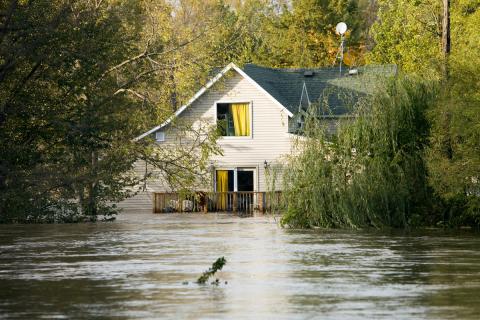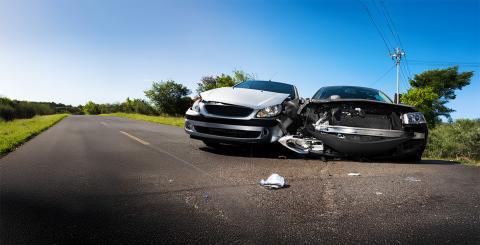Emergency winter driving kit: The essentials

Winter motor vehicle safety isn’t just about driving extra carefully. A winter survival kit is another important part of it. But what goes in that emergency kit? We have a list of the essentials for you. We’ll also check in with an automotive expert. With his sage advice and the right emergency kit, you'll be ready for whatever winter sends your way.
JEAN FALCON, EXPERT WITH CANADIAN TIRE
Jean Falcon has racked up a lot of years in the automotive business. Currently he’s associate VP, Automobile, with Canadian Tire. As such, he works closely with Canadian Tire’s service centres to improve customer experience. That puts him in contact with all kinds of tire manufacturers and installers as well as their customers. Here’s how he answered our questions:
What would you say are the essentials to have in your car in winter?
The first thing you need in your car to survive winter is a good set of tires that aren’t too worn. It’s a basic safety issue. You really need to buy tires designed for the kind of driving you do, whether on snow, ice, or what have you. A shovel, a snow brush and scraper, windshield wiper fluid that’s good to −35°C or colder, and an emergency kit are other important things to have in your car.
What are the most dangerous winter driving conditions?
For things like blizzards, freezing rain, or sleet, what’s most important is to adjust your driving to the conditions. Obviously it’s best if you can stay off the roads completely. And if you don’t have your winter tires on yet, forget it. Having the right tires is essential because they're all there is holding you on the road. To learn more about winter driving hazards and improve your technique, you might consider taking a winter driving course from a recognized driving school. They’ll cover things like braking, emergency manoeuvres, slippery roads, and getting you vehicle back under control after a skid.
What are the best practices for winter driving?
If you know you’re late for something, at least you can get there without having an accident. How do you feel when someone tailgates you? Or rolls by in an igloo on four wheels? Probably not too safe. Don’t be that kind of driver—it really is dangerous. Maintain a safe distance and keep your windows free of snow and ice. The life you save may be your own.
What should you do to get your car ready for winter?
Most places that mount winter tires can also do a safety inspection. It’s a great idea to make sure your brakes, steering, and battery as well as your heating and cooling systems are ready for the challenges ahead. Make sure to flush out any summer windshield washer fluid left in the tank so you can replace it with the winter version. And check your windshield wipers while you’re at it.
What should you do or not do if you’re in an accident?
Call 9-1-1 for help and take the time to figure out what's going on around you before trying to move or drive your vehicle. In most cases it’s better to stay in the vehicle because you’re safer there than outside. Stay in your seat and wait till the area has been secured before getting out.
What about all-season tires?
Just to clarify, all-season tires are the ones with the snowflake symbol on them. But they’re still not up to the climate here in Québec. Tests show they just don’t deliver. They’re a compromise solution, and people who buy them need to know their limitations. That means keeping the car in the garage when the weather gets iffy.
What do you think of December 1 as the deadline for having winter tires?
Is that the right date? Do folks in Abitibi and Lac-Saint-Jean wait till December 1? We all know winter and snow are coming, so why wait till the last minute and have to rush? Every year I’m amazed at the number of people who show up at the store expecting us to pop winter tires on their car within the next hour. Better a week or two early than trying to plow through the first blizzard on summer tires.
And when should you put your summer tires back on?
The magic number is 7°C. When spring at last shows up and temperatures stay above 7°C for more than a day, that’s when to have your summer tires put on. It’s worth knowing that a good set of summer tires will beat winter tires by a mile—at the right time of year.
If your car won’t start, what's the right way to jump start (boost) it from someone else’s car battery?
Actually I suggest you get a professional to do that if at all possible. With the advanced technology in today’s cars, it's just too easy to damage something. Instead, count on roadside assistance to get you up and running. A family plan is a worthwhile investment. A portable jump starter can do a great job too, if it’s properly hooked up. They’re now smaller and easier to use than ever before.
What should you do if you see a motor vehicle accident?
The first thing to do is call 9-1-1. I always say that, because they’re the ones who can guide you through the next steps. Every accident is different, so it would be irresponsible to recommend anything else. Naturally that means you need to have a cellphone or flag down somebody who does. In which case, the #1 rule is not to put yourself in danger.
YOUR EMERGENCY CAR KIT
Now let’s draw up the list of essentials for any car emergency kit. What should you have in your car in winter? Meet your winter survival kit:
- Snowbrush with scraper
- Shovel
- Traction mats
- Replacement fuses
- Bag of sand or salt
- Windshield wiper fluid and antifreeze
- Lock de icer
- Flashlight and spare batteries
- First-aid kit
- Tools like a screwdriver, pliers, scissors, etc.
- Emergency flares
- Jumper cables
- Warm blankets
- Spare mitts and other clothing (including socks and boots)
- Hand and foot warmers
- Cellphone charger
- Bottled water and food that won’t spoil
You can probably think of other useful items to add to the list, but these are certainly essential for every emergency kit.
So, if you haven’t done so already, we suggest you take the time to get your own emergency kit together to keep in your car. In unforeseen circumstances—from a breakdown to a full-on emergency—you’ll be glad you did. In the meantime, having car insurance that’s right for your needs is important too. Ask us for a quote. Because just like that emergency kit, we’re there, wherever and whenever you need us.




